
Moisture in Crawl Space
The water staining on the foundation walls is a clear sign of moisture in the crawl space.
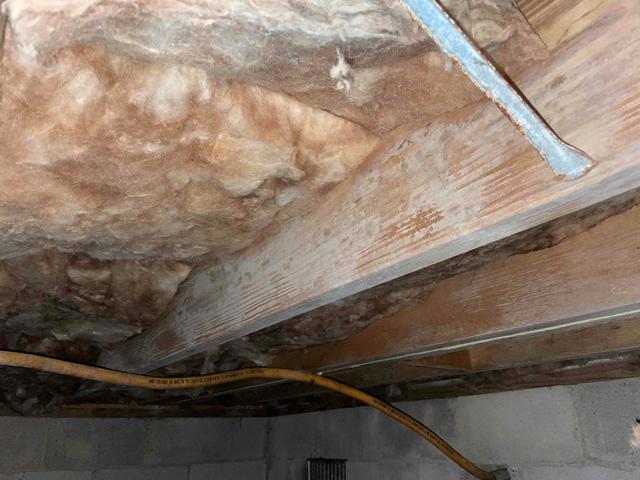
Microbial Growth
What looks like a powdery buildup on the joists is mold and mildew growth building up. Microbial growth occurs on organic material when there is high relative humidity and warm temperatures.

Falling Insulation
Falling insulation is typically a result of moisture and gravity working together. Moisture is absorbed by the insulation making it heavier. The insulation holds moisture against the support rods, rusting through them, and eventually, they fall. When wet fiberglass begins to delaminate, or pull apart from itself, this is can result in chunks falling down or fiberglass looking like it's dripping.
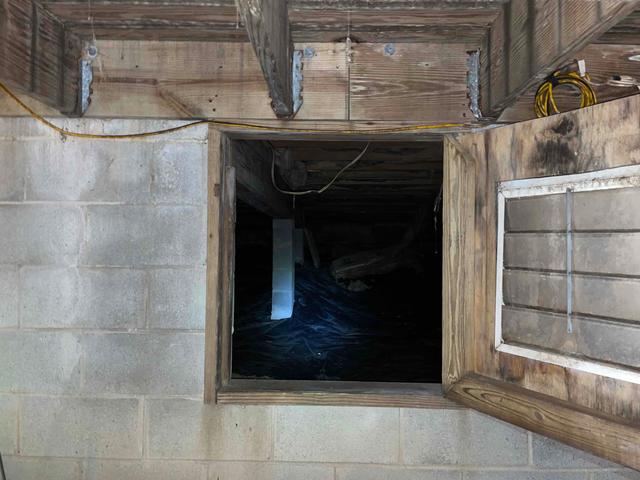
Crawl Space Access
Part of air sealing the crawl space includes behind the access door. This is basically a big hole where air carrying moisture can flood into space.
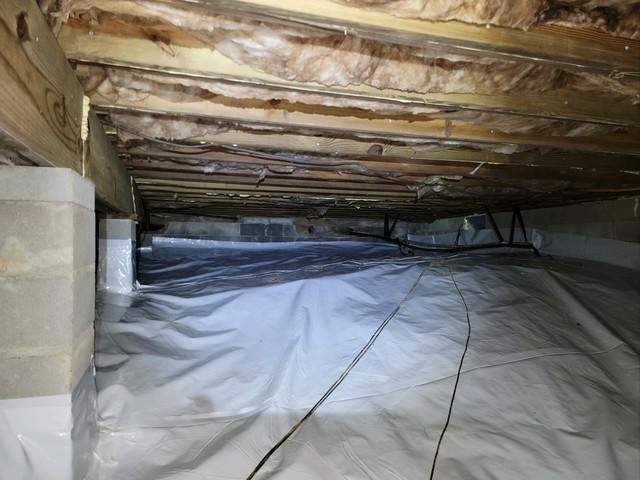
Fiberglass Insulation
For now, the homeowner has had us secure the fiberglass that's already under the home. When they are ready, we'll insulate them from the foundation walls.
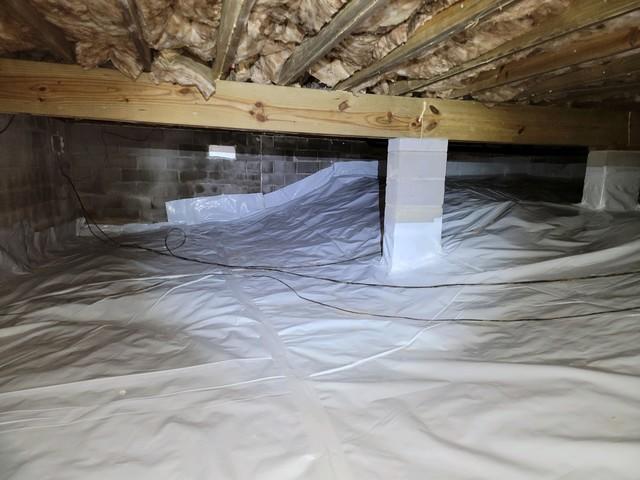
Antimicrobial Treatment
We used shockwave, an antimicrobial, to kill the mold and mildew growth on the substructure.
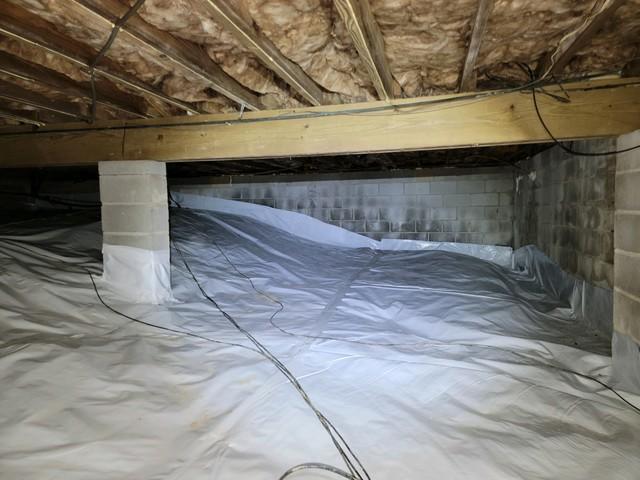
CleanSpace Vapor Barrier
A 10-mil vapor barrier has been installed, it's attached to the foundation walls, wrapped around all piers, and sealed at all seams to seal the crawl space from the earth's moisture.
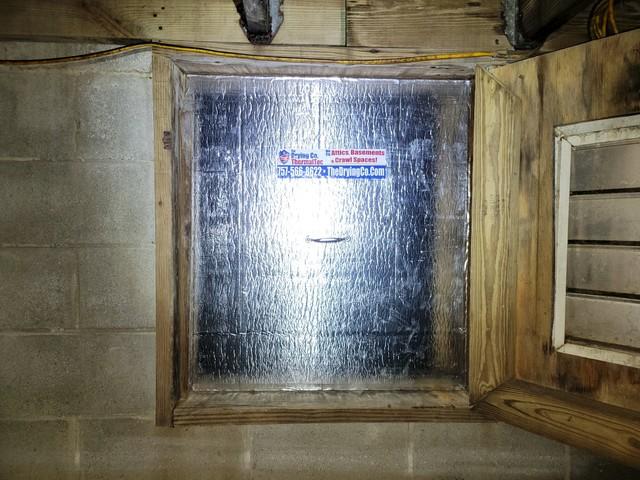
Friction Fit Door
Developed by our team, the Friction Fit Crawl Space door addresses a previously overlooked problem, unsealed and uninsulated crawl space doors. Custom-fit to the door, this interior crawl space door fits behind the exterior access and is hidden from sight.

